By digitizing the admission process, the time and resources required to admit patients are reduced, allowing for a more agile and effective service. By maintaining a single patient record and digitizing documents, the risk of errors and duplications that can affect the quality of care and information management is minimized. Digital signatures ensure that consents and contracts are properly authorized, supporting compliance with regulations and industry standards. By efficiently recording insurer and payer information, the billing and collection process is facilitated, reducing bad debts and improving revenue flow. Agility in the admission process and effective communication contribute to a more satisfactory experience for the patient, which is essential for the reputation and success of the hospital institution. HarmoniMD facilitates the process of admitting patients by allowing the capture of digital signatures on contracts and consent forms. This helps in expediting the admission process and ensuring that legal and ethical protocols are met before any treatment is administered. The system allows you to register and manage nimblyinformation of multiple insurers and payers, ensuring payment sources are properly documented and insurance claims are properly managed. HarmoniMD has tools to maintain an effective flow of communication with patients, including appointment reminders, status updates, and important messages. The system prevents duplicate records by creating unique patient profiles, making it easier to maintain accurate medical records and improve care coordination. It allows you to scan and digitally store important documents such as medical reports, test results and consent forms, reducing reliance on physical files and minimizing the risk of document loss. They ensure that consents and contracts are properly authorized, supporting compliance with regulations and industry standards. This function allows the scheduling and management of medical appointments, optimizing the calendar of health professionals. Patients can also access the calendar and schedule or reschedule their appointments, improving patient satisfaction and reducing no-show rates. All medical information for each patient is centralized in one place, allowing quick and reliable access to medical history, allergies, medications, among others. It allows effective communication with patients through calls, text messages or emails, for appointment reminders, follow-up or relevant information about their health. It facilitates remote consultations through videoconferencing, which is especially valuable for patients who cannot physically go to the clinic or hospital, or in health emergency situations. Generates detailed reports on the performance of the outpatient clinic, patient statistics, use of services, among others, which facilitates decision making and the identification of areas for improvement. By allowing online appointment scheduling and offering telemedicine services, accessibility to health services is improved, especially for those patients who have difficulty attending in person. Having a single clinical record ensures that doctors have all the information necessary to offer personalized, evidence-based care. Contactability tools and the ability to schedule appointments online contribute to a better patient experience, resulting in higher levels of satisfaction. By optimizing appointment management and reducing no-shows, you make better use of available resources, which in turn reduces operating costs. Telemedicine makes it possible to offer medical services beyond geographical limitations, expanding the reach of health care and reaching a broader population. The ability to quickly register critically ill patients and perform an effective triage assessment ensures a rapid response, which can be crucial in saving lives. Immediate access to the complete patient history allows healthcare professionals to make informed decisions at critical moments, minimizing the risk of errors or complications. By being able to classify patients according to the severity of their condition, available resources can be allocated more efficiently, ensuring that critical patients receive priority care. Specialized tools for the management of critically ill patients allow for continuous and effective monitoring, which can improve outcomes and reduce the length of stay in the emergency room. The reports and statistics allow an objective evaluation of emergency care, facilitating the identification of areas for improvement and the implementation of changes that contribute to improving the quality of care. Allows quick and efficient registration of patients who arrive in critical or unconscious condition. This function is essential to ensure that patients receive emergency medical care in a timely manner. Facilitates the evaluation and classification of patients according to the severity of their condition. This helps prioritize care for those requiring immediate intervention and ensures resources are used efficiently. Provides specialized tools and functionality for monitoring and treating critically ill patients, including viewing vital signs, medication administration, and access to emergency protocols. Allows immediate access to the patient’s complete medical history, including allergies, pre-existing conditions, medications taken, etc. This is vital for making informed decisions in emergency situations. Generates detailed reports and statistics on emergency care, allowing you to evaluate the effectiveness of care, identify areas for improvement, and plan resources. Clara can answer clinical questions, summarize patient histories, and draft medical notes—all without leaving the system interface. This module allows healthcare professionals to create, manage and monitor medical orders efficiently. This includes prescriptions, requests for laboratory tests, orders for imaging studies, and referrals to specialists. Clinicians can customize clinical documents, tailoring them to their specific needs and ensuring that relevant information is available and organized in the most effective way. The module allows for systematic and detailed recording of vital signs and other relevant clinical data, such as fluid balance, glycemic control, ventilatory parameters and neurological evaluations. The administration of medications is facilitated with functionalities that ensure the correct dispensing, dosing and monitoring of medications prescribed to patients. The patient’s entire medical history and care schedule, including appointments, medications, tests and procedures, are accessible on a single screen, allowing a global view of the patient’s care. Within the EHR, Clara can answer clinical questions, summarize patient histories, and draft medical notes—all without leaving the system interface. By having access to detailed and up-to-date patient information, healthcare professionals can make more informed decisions, resulting in higher quality care. The centralization of information and the ability to customize clinical documents saves time and reduces errors, allowing medical staff to focus on patient care. Safe medication administration minimizes the risk of errors in medication dispensing and dosing, resulting in greater patient safety. By having a complete patient schedule on a single screen, coordination between different specialties and departments is facilitated, resulting in more integrated and cohesive care. By maintaining detailed electronic records, the hospital is better positioned to comply with regulations and quality standards in healthcare. With Clara supporting clinical documentation, patient information is captured faster and more accurately—reducing omissions and improving medical record quality. Clara analyzes patient data and can suggest alerts or tailored clinical insights, helping physicians provide more customized and responsive care. Adequate nutrition is essential for patients’ recovery. By providing personalized menus based on nutritional needs, you significantly contribute to your recovery process. By keeping a detailed record of nutritional needs and restrictions, the risk of allergic reactions and dietary complications is minimized. Kitchen management facilitates efficient food planning and preparation, reducing waste and improving service quality. Ensuring that food is handled in accordance with hygiene and safety standards contributes to regulatory compliance and improves service quality. By offering meals that not only meet medical requirements, but also consider patient preferences, your satisfaction and experience during your hospital stay is improved. It allows you to maintain a detailed record of each patient’s nutritional needs and restrictions, which includes information on allergies, dietary preferences, and specific nutritional requirements based on their health status. It facilitates the creation of personalized menus for each patient based on their nutritional record, ensuring that they receive the appropriate nutrition according to their medical needs and preferences. Healthcare professionals can generate specific meal orders for patients, ensuring they receive the necessary portions and nutrients at the right time. Enables efficient coordination and management of the hospital kitchen, including meal planning, ingredient management, and tracking food preparation.kitchen ion Ensures food is prepared, stored and served in accordance with best food safety and hygiene practices. Generates detailed reports and statistics on patient nutrition and feeding, making it easy to track their nutritional status and improve food services. It allows graphic visualization of patients’ dentition and recording of periodontal conditions. This helps dentists identify and record problems such as cavities, restorations, periodontal diseases, among others, in an easy-to-understand and analyze format. Facilitates the registration and consultation of patients’ medical history in relation to their oral health. Facilitates the registration and consultation of patients’ medical history in relation to their oral health. It allows you to record and keep track of dental procedures performed on patients, such as cleanings, extractions, implants, among others, including dates, materials used, and results. Generates detailed reports and statistics on dental care, including the prevalence of oral conditions, procedures performed, and other data that can be useful for managing and improving dental services. Graphic visualization through odontograms and access to dental medical history allow for a more precise diagnosis and more effective treatment. Systematic recording of procedures and medical history in a digital format allows quick and easy access to information, which is essential for continuity of care. By having detailed information about the patient’s oral health, dentists can personalize treatments based on the specific needs of each individual. The reports and statistics allow hospital administration to analyze the needs and demands regarding dental care, which facilitates better planning and allocation of resources. By maintaining a detailed record of patients’ oral health, patterns and risks can be identified, allowing oral health education and prevention programs to be implemented. The module helps comply with regulations and quality standards by ensuring adequate management of clinical information and ancillary services. By monitoring the effects of medications and controlling their dispensing, you reduce the risk of medication errors, adverse reactions, and drug interactions. Inventory control by batches and expiration dates ensures efficient management of resources, minimizing losses due to expired medications and avoiding shortages. Medication reconciliation and patient history ensure that treatments are consistent and based on the patient’s medical history, improving continuity and quality of care. By maintaining accurate records and performing pharmacovigilance, the pharmacy module helps comply with regulations and quality standards in medication administration. Reports and statistics allow pharmacy managers to make informed decisions based on real data, improving the efficiency and effectiveness of the pharmacy. This function allows the monitoring and analysis of the effects of medications on patients, with the aim of identifying and evaluating possible adverse reactions or drug interactions. This contributes to the safety and effectiveness of drug use. It focuses on ensuring that patients receive the appropriate medications when entering, during, and leaving the hospital, comparing the medication the patient was previously taking with what is prescribed in the hospital. It allows you to keep a detailed record of the medications available in the pharmacy, grouped by batches and tracking their expiration dates, ensuring that only medications are dispensed within their validity period. Facilitates the process of delivering medications to patients according to their medical prescriptions, ensuring the correct administration of doses, schedules and duration of treatment. It maintains a complete record of the medications that have been dispensed to each patient, which makes it easier to monitor treatments and detect possible interactions or allergies. Generate detailed reports and statistics on medication usage, inventories, and trends, facilitating decision making and improving pharmacy management. Manage master information for all medications, including specifications, contraindications, and recommended dosages. This function allows you to record and control the sterilization processes of medical instruments and equipment, ensuring that appropriate protocols are followed to maintain sterility. Allows monitoring and management of the inventory of medical equipment and instruments, including check-in and check-out, maintenance and stock replenishment. Maintains detailed records of the use of equipment and instruments in surgical procedures and patient care, tracking usage history and ensuring items are in optimal condition for use. Generates reports and statistics on the use, maintenance and status of equipment and instruments, facilitating decision making and resource planning. By carrying out rigorous control of sterilization processes, the risk of infections is minimized and it is ensured that equipment and instruments are in adequate condition for use in medical procedures. By maintaining detailed inventory control, the loss of equipment is avoided and the use of resources is optimized, which contributes to the hospital’s operational efficiency. Reports and statistics help identify trends, needs and opportunities for improvement in team management, facilitating informed decision making and strategic planning. Maintaining proper control of sterilization and equipment use helps comply with health care quality and safety regulations and standards. Knowing that equipment and instruments are properly sterilized and maintained builds trust between patients and medical staff, which contributes to better relationships and satisfaction. The mixing center and controlled administration of chemotherapies reduce the risk of errors in drug preparation and administration, resulting in greater patient safety. Efficient scheduling of chemotherapy allows for better utilization of hospital resources and minimizes wait times for patients The ability to configure treatment regimens allows treatments to be tailored to the specific needs of each patient, which can result in greater effectiveness. By having stricter and more detailed control of oncology treatments, the quality of patient care is improved, which can result in better outcomes and greater patient satisfaction. The reports and statistics provide valuable information that can help healthcare professionals make more informed decisions about treating cancer patients. It allows the handling and preparation of chemotherapy drugs in a controlled environment, ensuring that safety protocols are followed and the risk of errors in drug preparation is minimized. It facilitates the scheduling of chemotherapy sessions for patients, taking into account factors such as the availability of resources and the scheduling of other treatments. Allows sessions to be adjusted and rescheduled efficiently. Records and monitors the administration of medications in chemotherapy sessions, ensuring that proper protocols are followed and correct doses are administered. It allows you to configure and personalize treatment regimens for each patient, based on factors such as cancer type, stage, and response to treatment. Generates detailed reports and statistics on oncology management, including medication utilization, treatment effectiveness, and patient monitoring. It allows the monitoring and allocation of hospital beds, which facilitates the optimization of resource use and minimizes waiting time for patients requiring hospitalization. It offers specialized interfaces for doctors and nurses, with tools adapted to the needs of each role. This includes access to medical records, doctor orders, medications, and more. It allows the design and monitoring of individualized care plans for each patient, ensuring that the indicated care and treatment needs are met. Makes it easy to create task lists and assignments for medical and nursing staff. This helps organize and prioritize the activities to be carried out during the day. Send notifications and alerts related to the status of patients, such as changes in vital signs, need for medication administration, among others, ensuring a quick response. Enables efficient management of documentation related to patient hospitalization, including medical reports, consents, and more. Generates detailed reports and statistics on hospitalization, allowing data analysis to improve the quality of care and optimize resources. Bed management contributes to a more efficient use of available resources, which translates into better patient care and a reduction in waiting times. The ability to plan individualized care ensures that patients receive the care and treatments they need during their hospital stay. Worklists and alerts facilitate communication between medical team members and help effectively coordinate patient care activities. The centralization of information and the possibility of accessing it quickly and safely helps minimize errors in care, which is essential for patient safety. Reports and statistics allow you to identify trends, areas of improvement and opportunities for optimization in hospital care. This contributes to continuous improvement in the quality of care. Operating room management and surgical scheduling allow for more efficient utilization of available resources, resulting in reduced costs and improved patient care. Control of the preoperative, intraoperative and postoperative processes guarantees continuous and consistent care, which is essential for the patient’s well-being and recovery. Safe surgery protocols and standardized templates help minimize errors and complications during surgical procedures. The implementation of safety protocols and proper anesthesia management ensure that the patient is protected at all times during the surgical procedure. Reports and statistics allow managers to make informed decisions, which contributes to the continuous improvement of surgical services. It allows the handling and preparation of chemotherapy drugs in a controlled environment, ensuring that safety protocols are followed and the risk of errors in drug preparation is minimized. It facilitates patient monitoring at all stages of surgery, from preoperative preparation to postoperative recovery, guaranteeing continuity and quality of care. Provides specialized tools for anesthesia management, including documentation of administered medications, monitoring of vital signs, and planning of anesthetic procedures. It allows for effective planning and scheduling of surgeries, ensuring that factors such as the availability of operating theatres, equipment and staff, as well as the clinical needs of patients, are considered. It facilitates the creation and use of standardized templates for surgical procedures, which contributes to uniformity and reduction of errors in documentation. Implements surgical safety protocols and verifications, such as the WHO safe surgery checklist, to ensure patient safety during the procedure. Generates reports and data analysis on surgical procedures, which facilitates evidence-based decision making and contributes to improving the quality of care. It allows you to manage laboratory test requests, record and store results, and automatically send them to the patient’s clinical record. It also helps manage reagent inventory and control the quality of exams. Makes it easy to schedule imaging studies such as x-rays, MRIs, and ultrasounds. It allows the visualization of medical images, and their integration into the clinical record. Additionally, it includes options for image annotation and analysis. Manages requests for pathology studies, including biopsies and cytology, and allows the registration of the results and their integration into the patient’s clinical record. It allows you to manage morgue services, including the registration of admissions and discharges of corpses, the scheduling of autopsies, and the control of related legal documentation. It allows interoperability with other health systems through the use of the HL7 standard, which facilitates the exchange of clinical information between different platforms and services. Generates detailed reports and statistics on ancillary services, including resource utilization, response times, and trends, contributing to decision-making and management improvement. By automating the management of requests and results, response times are speeded up, allowing for a more efficient service and contributing to a faster diagnosis. Having all information related to ancillary services integrated into the patient’s clinical record improves accessibility to information, which favors data-based clinical decision making. By having reports and statistics, managers can identify areas for improvement, and optimize the allocation of resources, resulting in a more cost-efficient service. By having faster and more efficient access to the results of laboratory, imaging and pathology studies, healthcare professionals can provide more informed and accurate care. Integration with HL7 systems allows for a fluid exchange of information with other health systems, which facilitates collaboration between different health entities and services. The module helps comply with regulations and quality standards by ensuring adequate management of clinical information and ancillary services. By allowing patients to be actively involved in their healthcare and reducing wait time, their experience is significantly improved. Pre-registration and appointment scheduling through the portal reduces the administrative burden on hospital staff and allows for more efficient use of resources. The ability to securely communicate with the doctor through the portal improves the doctor-patient relationship and allows for more personalized care. By having access to their results and prescriptions, patients are better informed and can more actively participate in decisions related to their health. By allowing patients to manage their appointments through the portal, the number of no-shows is reduced and the agenda of health professionals is optimized. Before arriving at the hospital, patients can complete forms and provide information necessary for their admission, streamlining the process when they arrive at the hospital and improving the patient experience. Patients can securely access lab results, imaging studies and other medical reports through the portal. This allows them to be more informed about their health and make more conscious decisions. The portal offers a platform for secure communication between doctors and patients, which facilitates the clarification of doubts, post-consultation follow-up and the exchange of relevant information. Patients can view and download their prescriptions through the portal, making it easier to purchase medications and ensuring they have access to usage and dosing instructions. Patients can schedule, reschedule or cancel medical appointments through the portal. This not only improves the patient experience, but also helps streamline hospital appointment management. HarmoniMD’s CRM module allows the registration of new prospects and the management of follow-ups throughout the sales cycle. This includes the ability to track the activity and progress of each lead to ensure effective communication and service. Managers can assign prospects and specific tasks to sales team members, ensuring that resources are used efficiently and that prospects receive attention from the most appropriate agents. A complete history of all customer communications, including calls, emails and meetings, can be recorded and accessed, ensuring all team members are informed and can deliver a consistent, personalized service. The CRM module includes reporting tools that allow you to analyze key data and metrics, such as conversion rates, revenue, and customer satisfaction, to evaluate performance and guide future strategies. It allows you to automate repetitive tasks and sales processes, increasing efficiency and allowing the team to focus on higher-value tasks. HarmoniMD CRM offers tools to manage and create sales forecasts, helping you anticipate trends and plan effective marketing and sales strategies. By automating processes and enabling effective task assignment, the sales team can operate more efficiently and focus on activities that generate value. By having effective lead tracking and a communications log, you can improve your conversion rate from leads to customers. Reports and statistics allow you to have a clear view of performance and understand trends, making it easier to make informed decisions. By maintaining a record of communications, it is possible to offer a personalized service that adapts to the needs and preferences of each client. Forecast management allows you to anticipate future demands and trends, helping you plan and prepare effectively. Centralization of information and management of communications ensure that customers receive consistent, high-quality service, regardless of which agent they interact with. By using templates and real-time updates, employees can generate quotes more efficiently, allowing for better use of resources and greater focus on other important tasks. The system ensures that prices and costs are up to date, resulting in accurate and consistent quotes, improving customer and patient confidence. By monitoring the status of quotes and analyzing financial reports, you can improve your sales strategy and make informed decisions to optimize profitability. The referral log provides valuable information about patient or customer sources, which can be used to fine-tune marketing strategies. The ability to quickly respond to quote requests and provide accurate, up-to-date information contributes to a more satisfying experience for customers and patients. Allowing sales agents to access the system via mobile devices increases their ability to respond to customer needs in a timely and effective manner, regardless of their location. HarmoniMD allows the creation of quote templates, making the process of generating quotes for patients or clients quick and easy. This is particularly useful when handling similar services or packages frequently. The system is equipped to automatically update prices and costs of services and products, ensuring that quotes always reflect the most up-to-date and accurate information. HarmoniMD offers the ability to monitor the status of each quote, providing real-time updates and enabling effective tracking to optimize the conversion of quotes into sales or services provided. The quotes module also includes financial reporting tools that allow you to analyze the profitability of quotes, helping with decision making and strategic planning. It allows you to record and monitor references where patients or clients come from, which helps in the analysis and optimization of marketing and sales strategies. Sales agents can access the quoting system via mobile devices, allowing them to generate and manage quotes anywhere, increasing their flexibility and responsiveness. Patient Admission
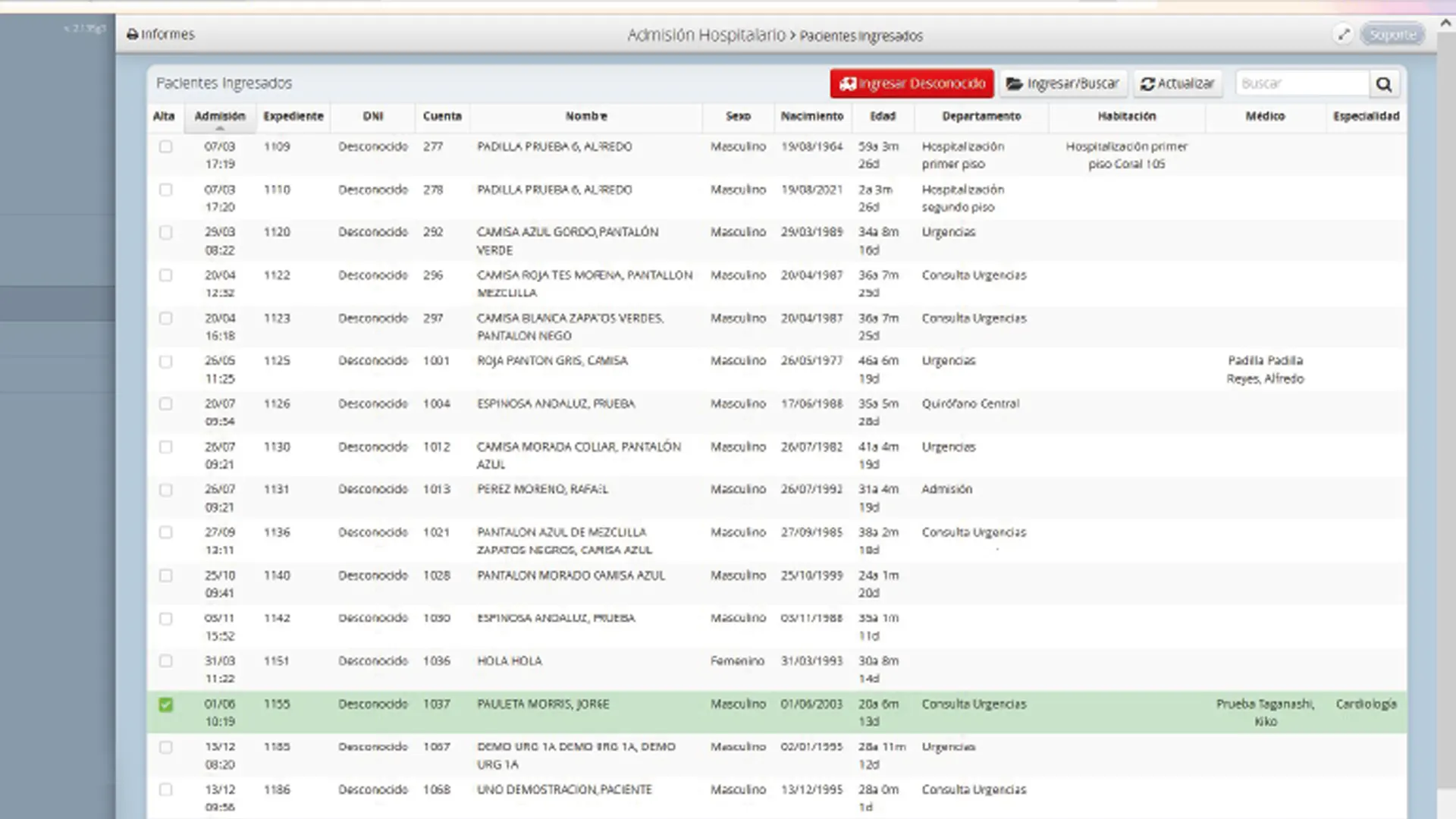
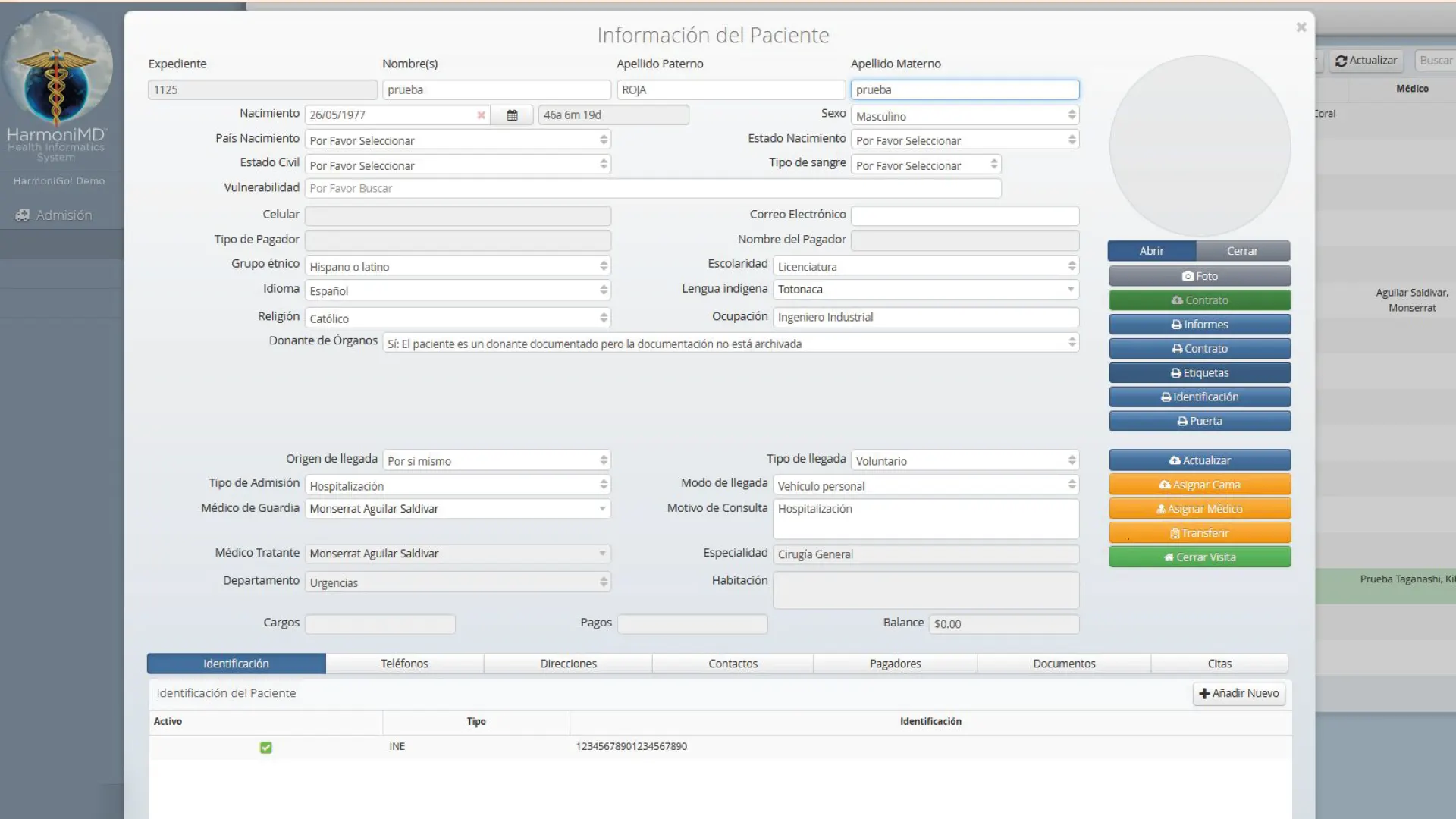
Benefits
Improved operational efficiencya
Reduction of errors and duplications
Security and compliance
Revenue Management Optimization
Improvement in patient satisfaction
Functionalities
Outpatient consultation and outpatients
Functionalities
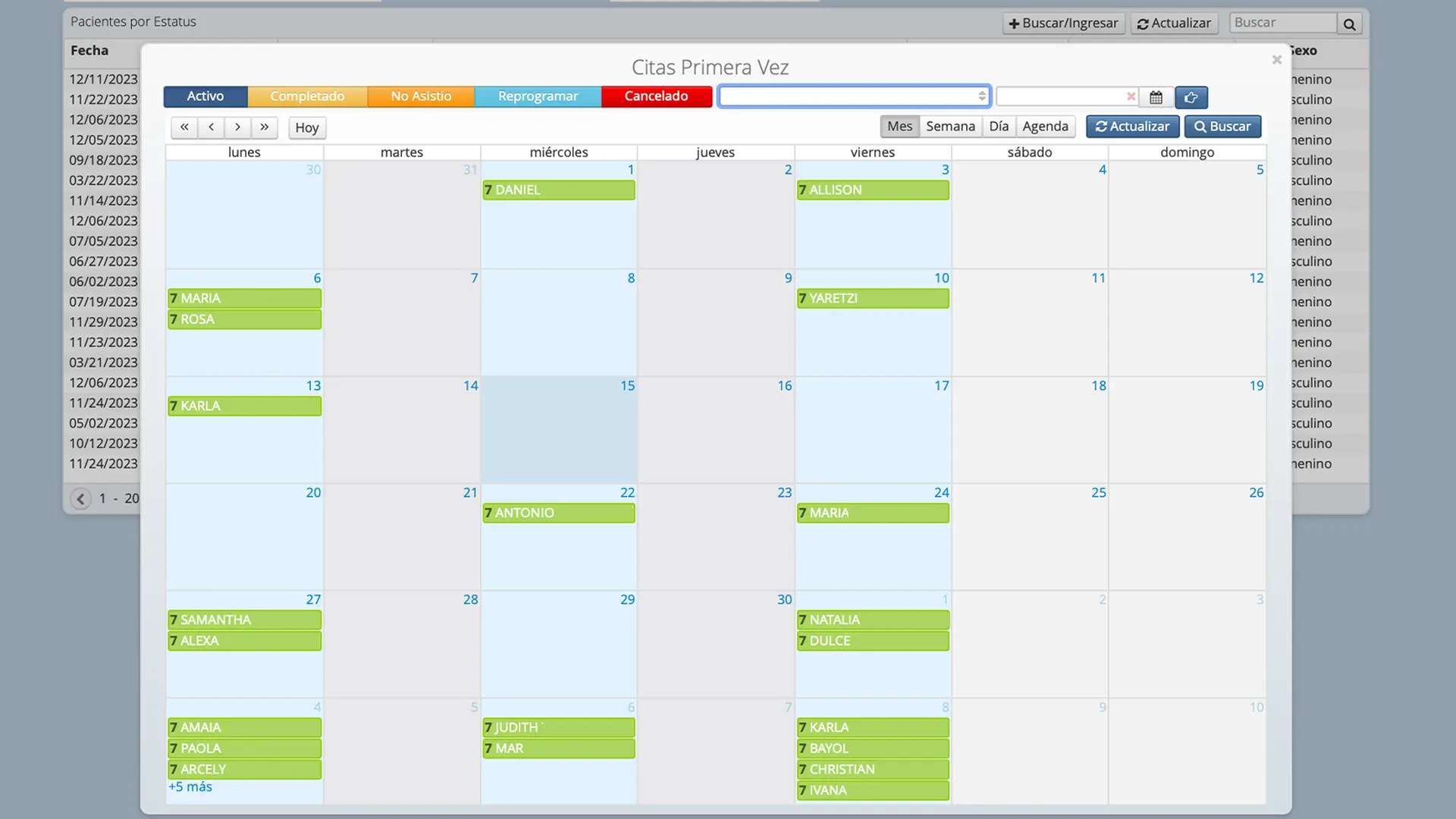
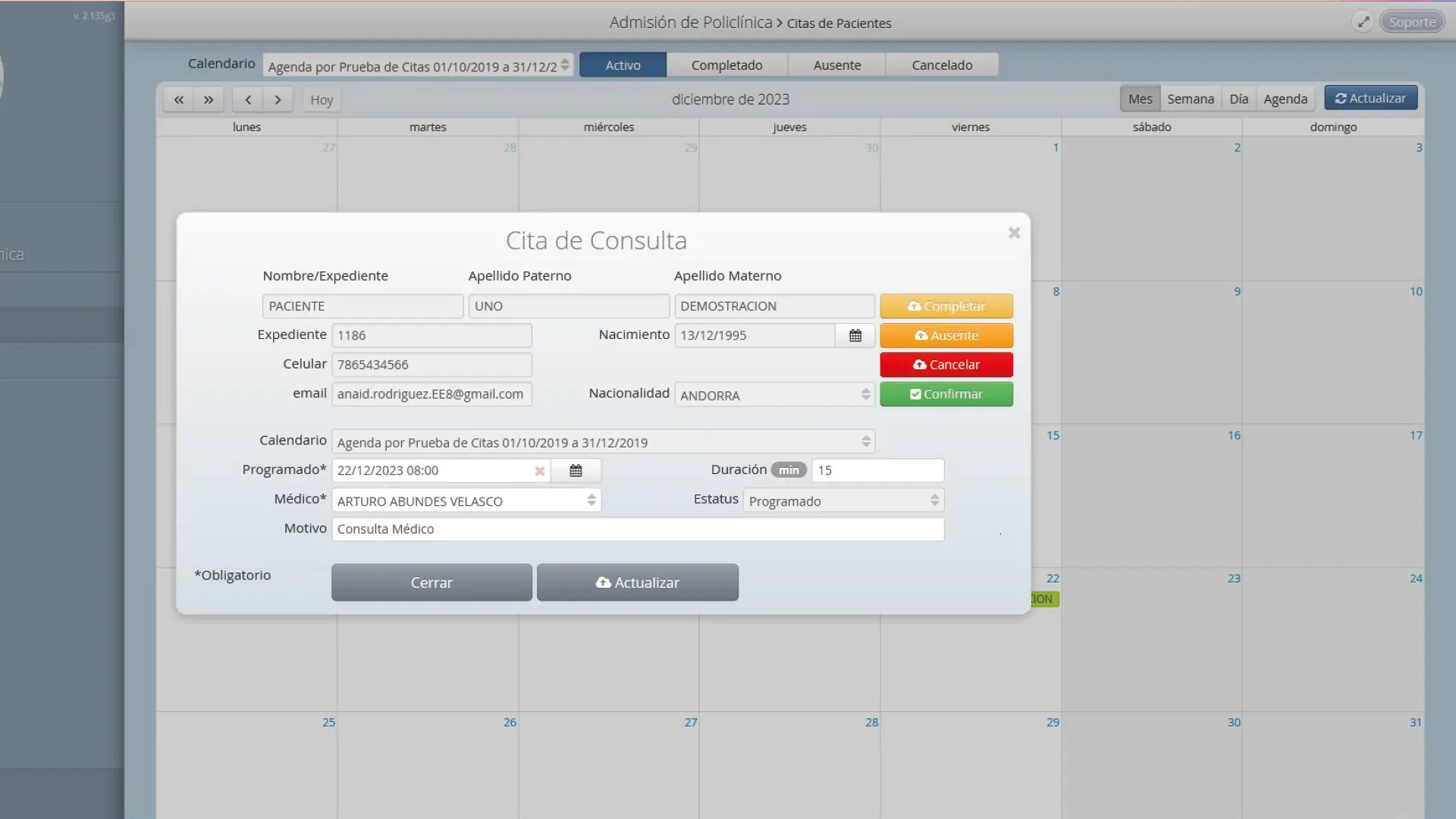
Benefits
Improved Accessibility
Optimizing Patient Care
Increased Patient Satisfaction
Costs reduction
Expanding the Scope of Services
Emergencies
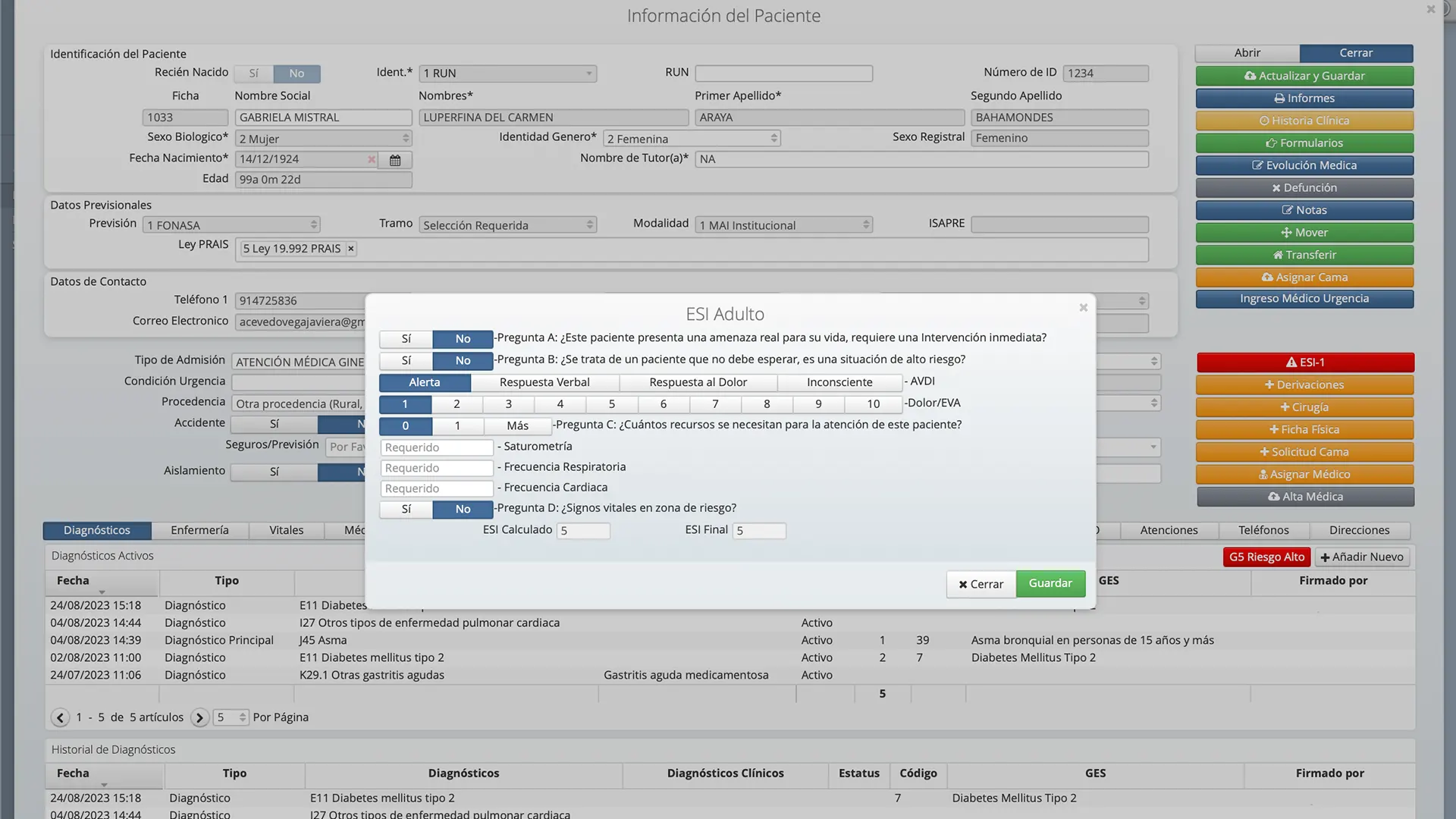
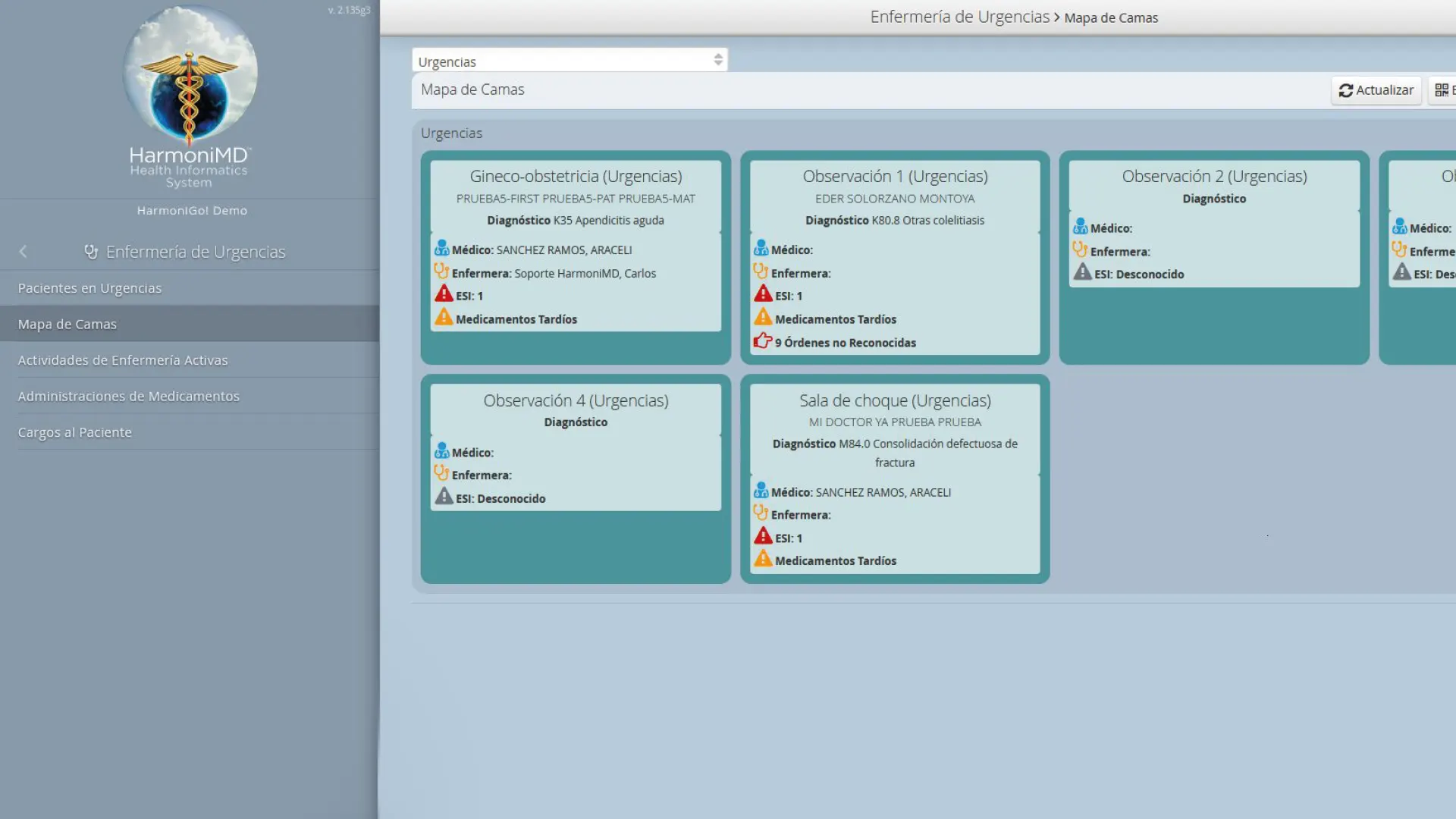
Benefits
Fast answer
Informed Decision Making
Resource Optimization
Effective Monitoring of the Critical Patient
Continuous Improvement
Functionalities
AI Assistant Integration: Within the EHR,
Functionalities


Benefits
Improvement in the quality of care
Increase in efficiency
Reduction of medication errors
Improved care coordination
Regulatory Compliance
Smart and Automated Documentation:
More Personalized Care:
Nutrition

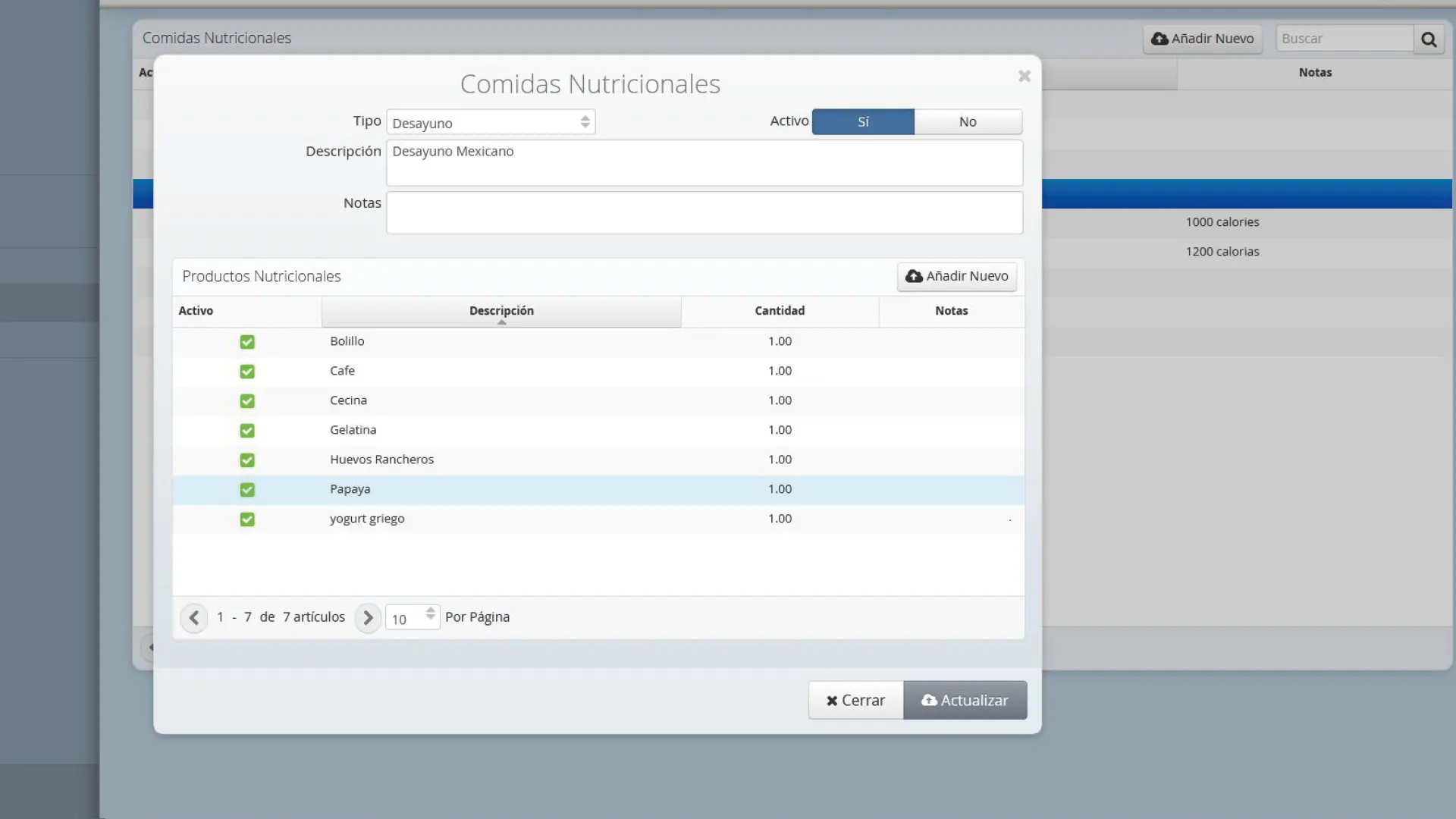
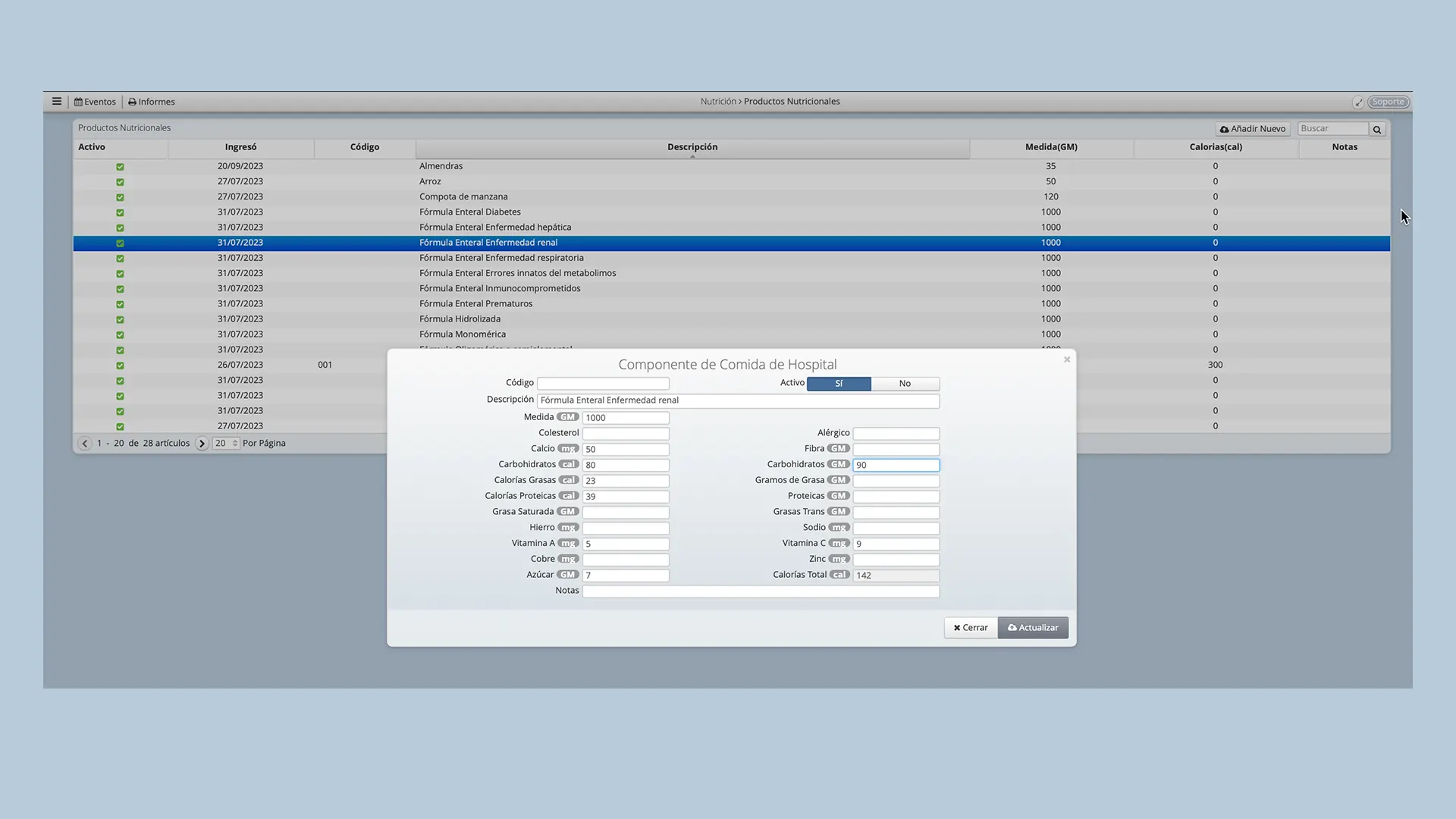
Benefits
Improved patient recovery
Minimizes the risk of feeding-related complications
Optimize kitchen operation
Compliance with regulations and quality standards
Improvement in patient satisfaction
Functionalities
Odontology
Functionalities
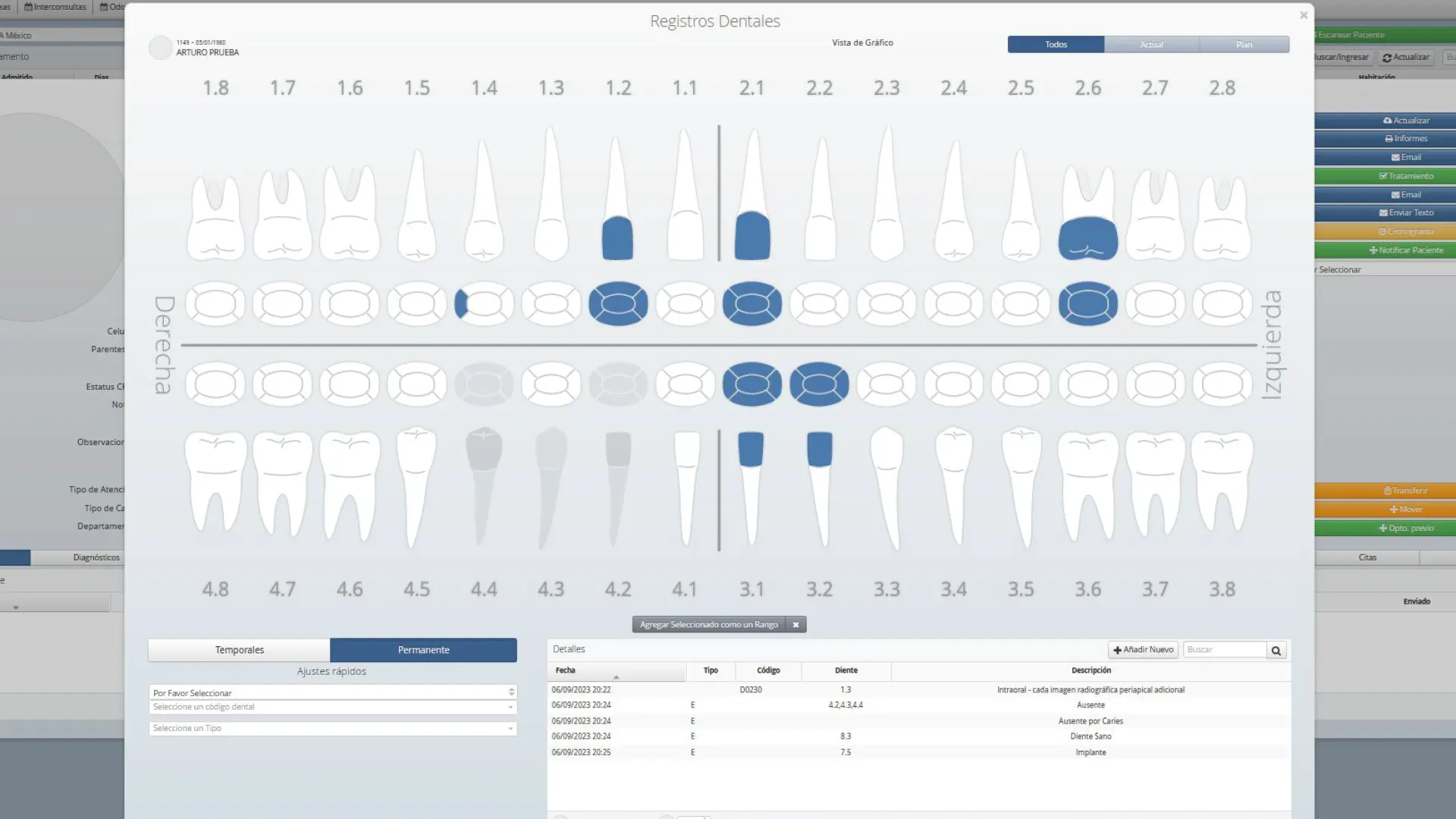
Benefits
Improvement in the Quality of Care
Efficiency in Information Registration
Personalization of Treatments
Better Planning and Resource Management
Prevention and Education
Regulatory compliance
Farmacia
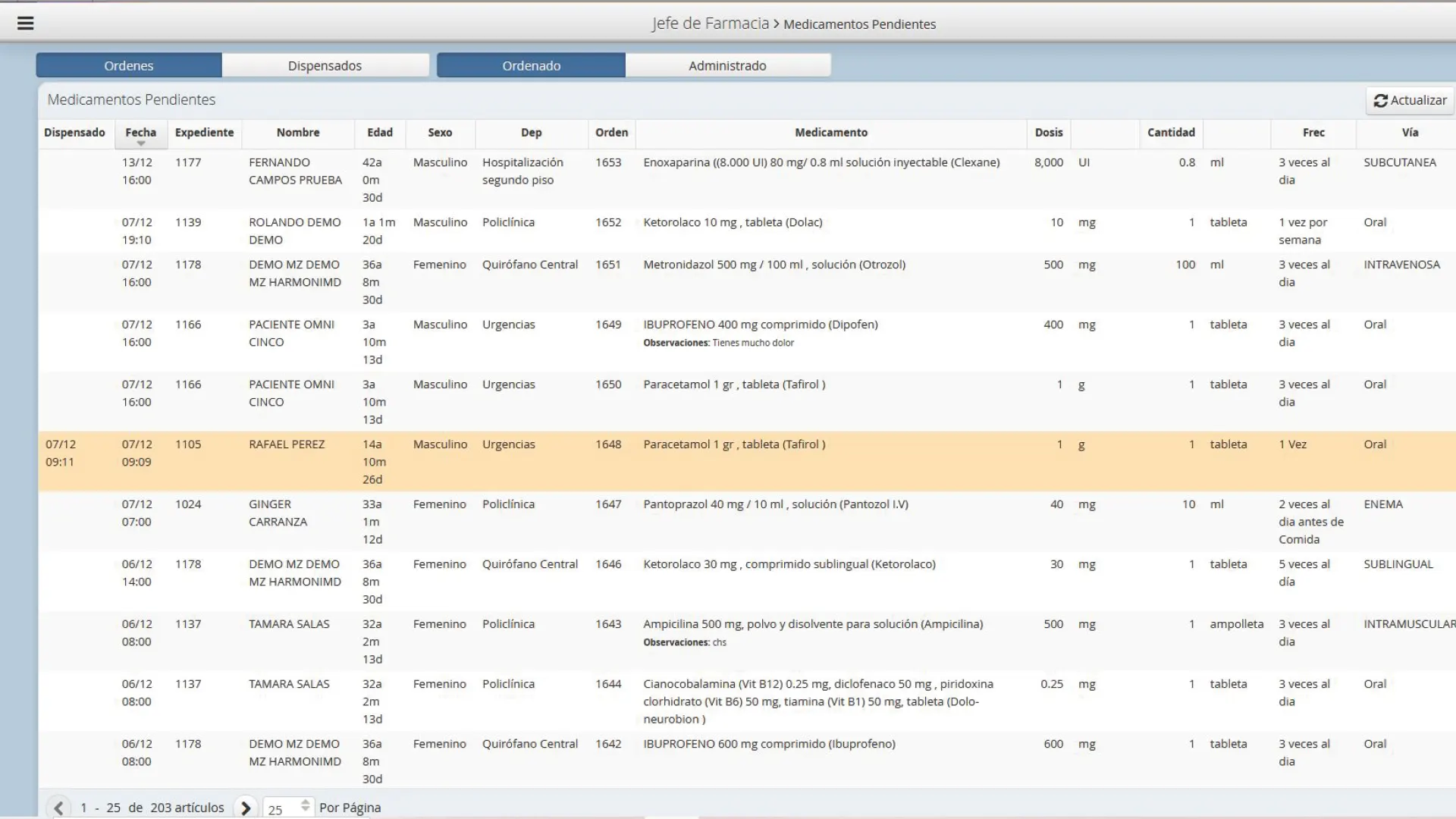


Benefits
Improved patient safety
Inventory Optimization
Improving continuity of care
Regulatory Compliance
Data-driven decision making
Functionalities
Central Equipment and Sterilization (CEYE)
Functionalities
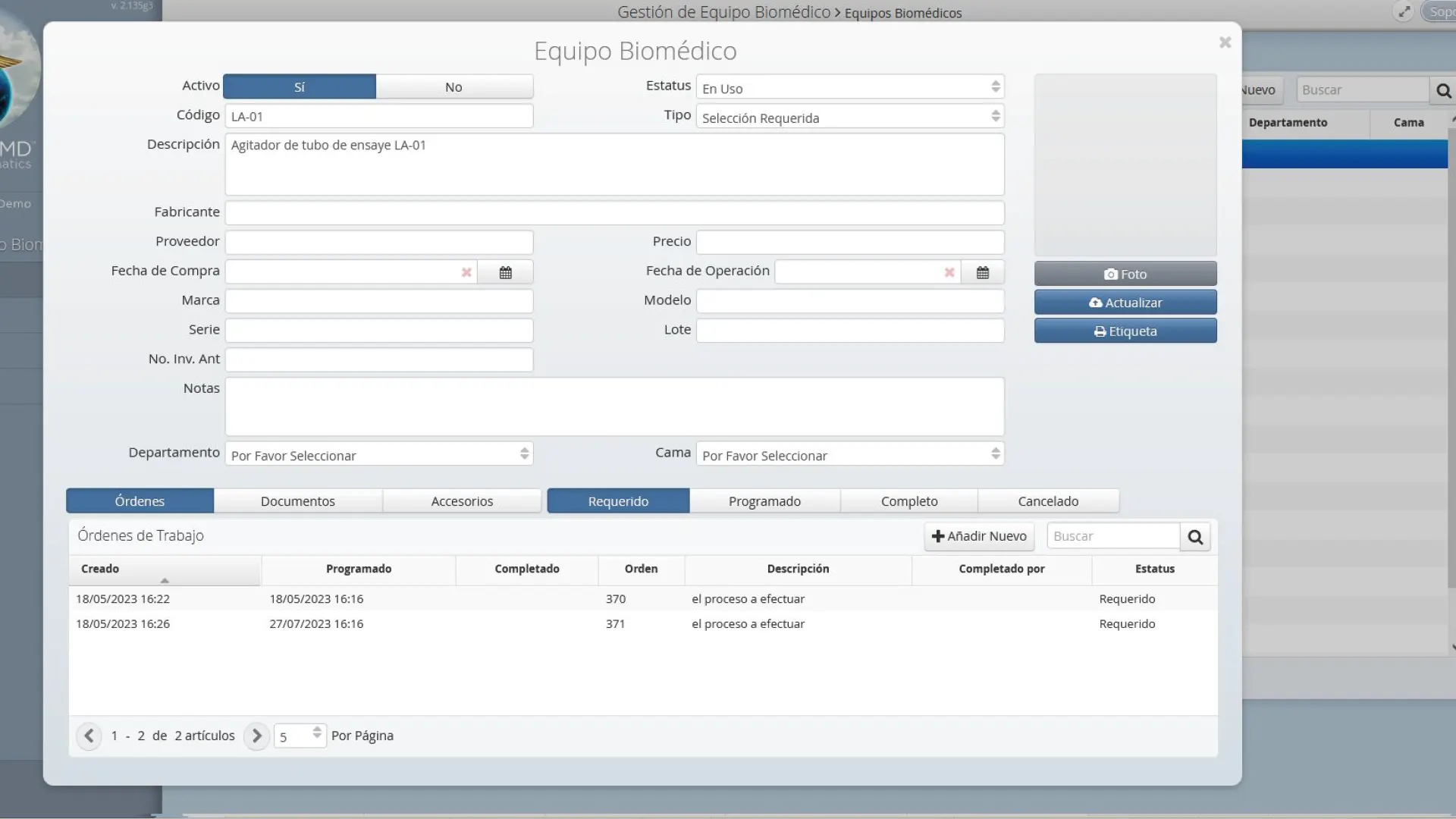
Benefits
Ensures patient safety
Resource Optimization
Improvement in planning and management
Compliance with regulations and standards
Greater confidence on the part of patients and health professionals
Oncology Management
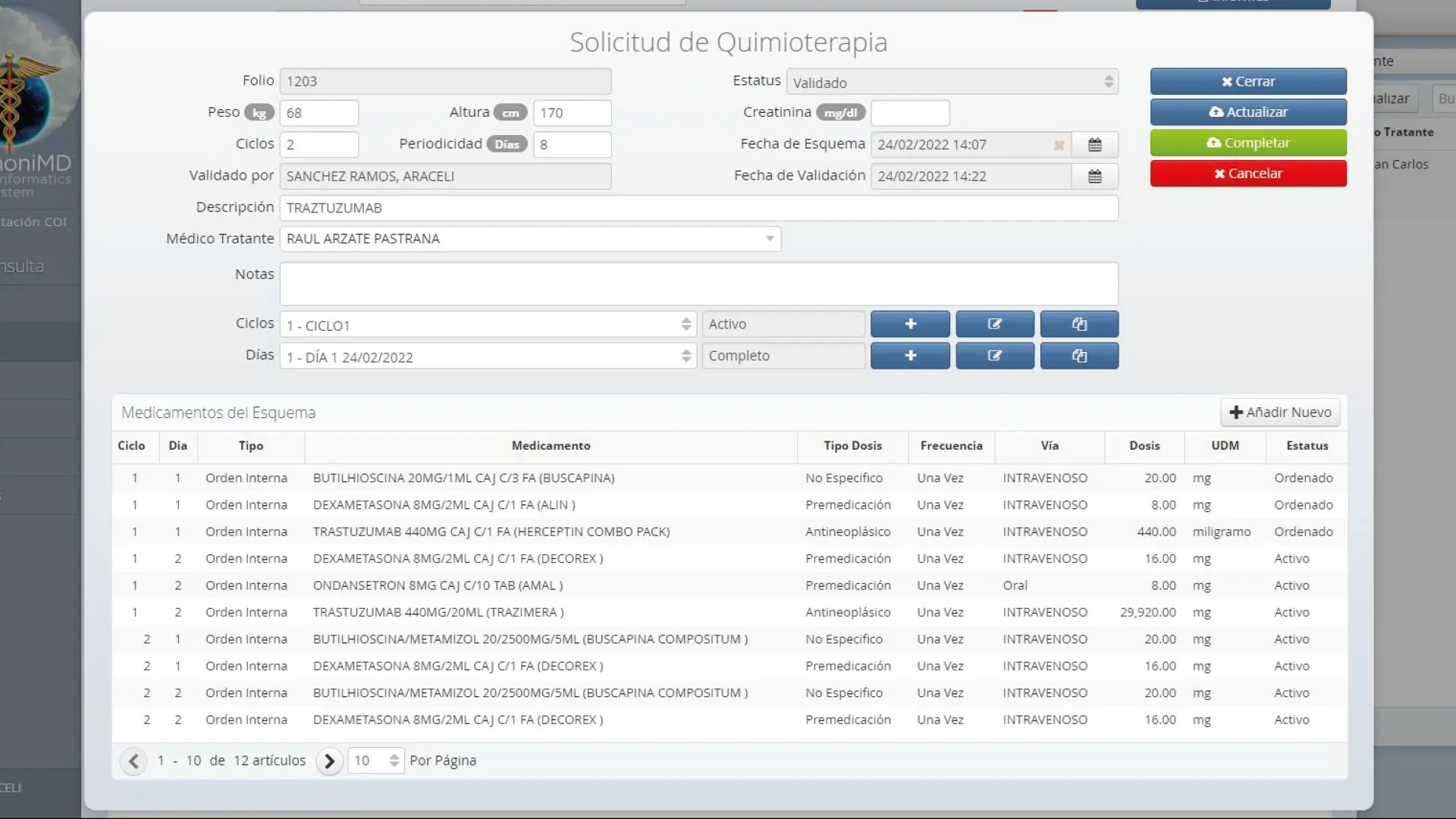
Benefits
Improved Patient Safety
Resources and Time Optimization
Personalization of Treatment
Improvement in Quality of Care
Data-Based Decision Making
Functionalities
Hospitalización
Functionalities
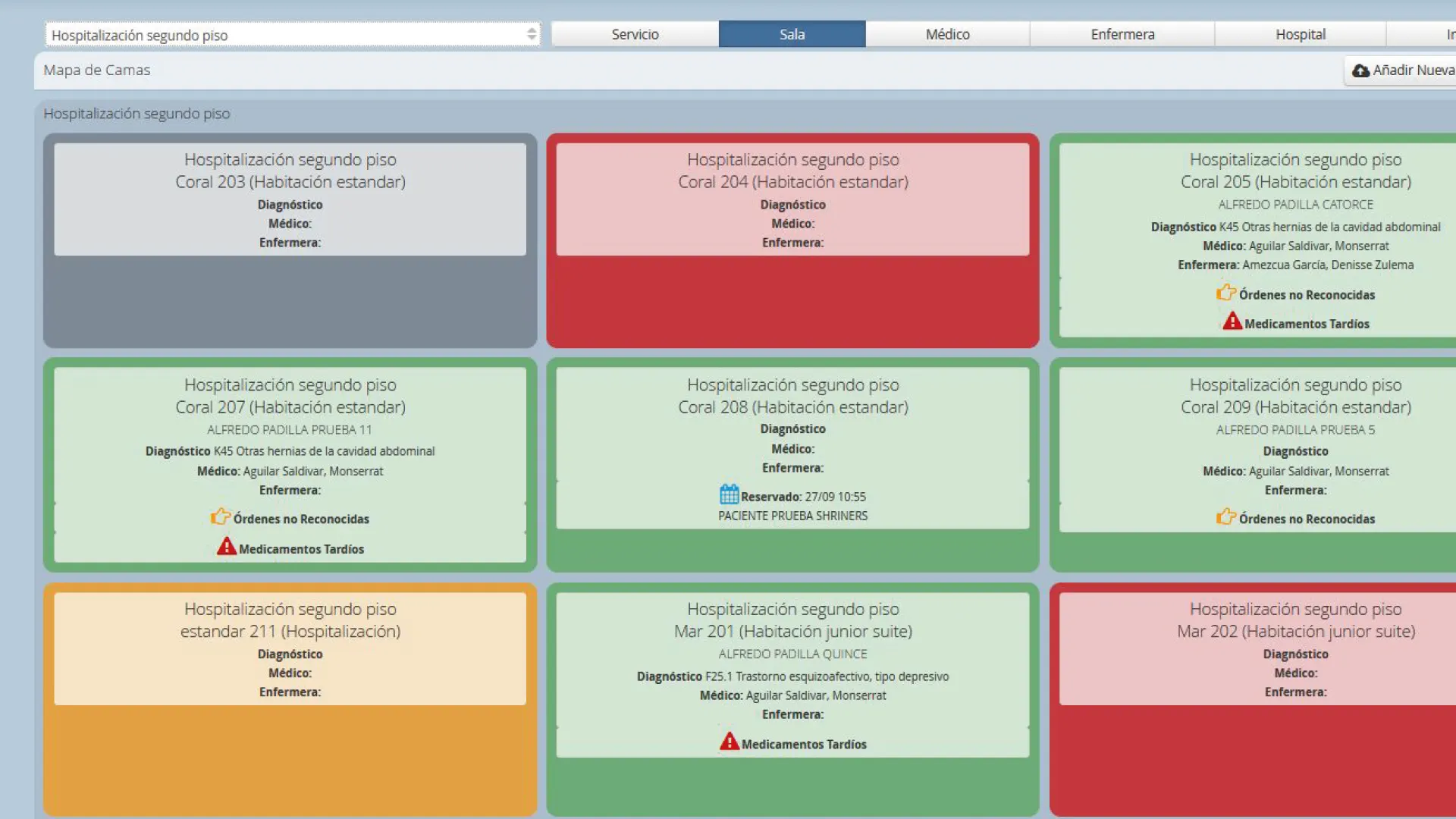
Benefits
Bed Usage Optimization
Personalization of Care
Improved Communication and Coordination
Error Reduction
Data Analysis for Continuous Improvement
Surgery
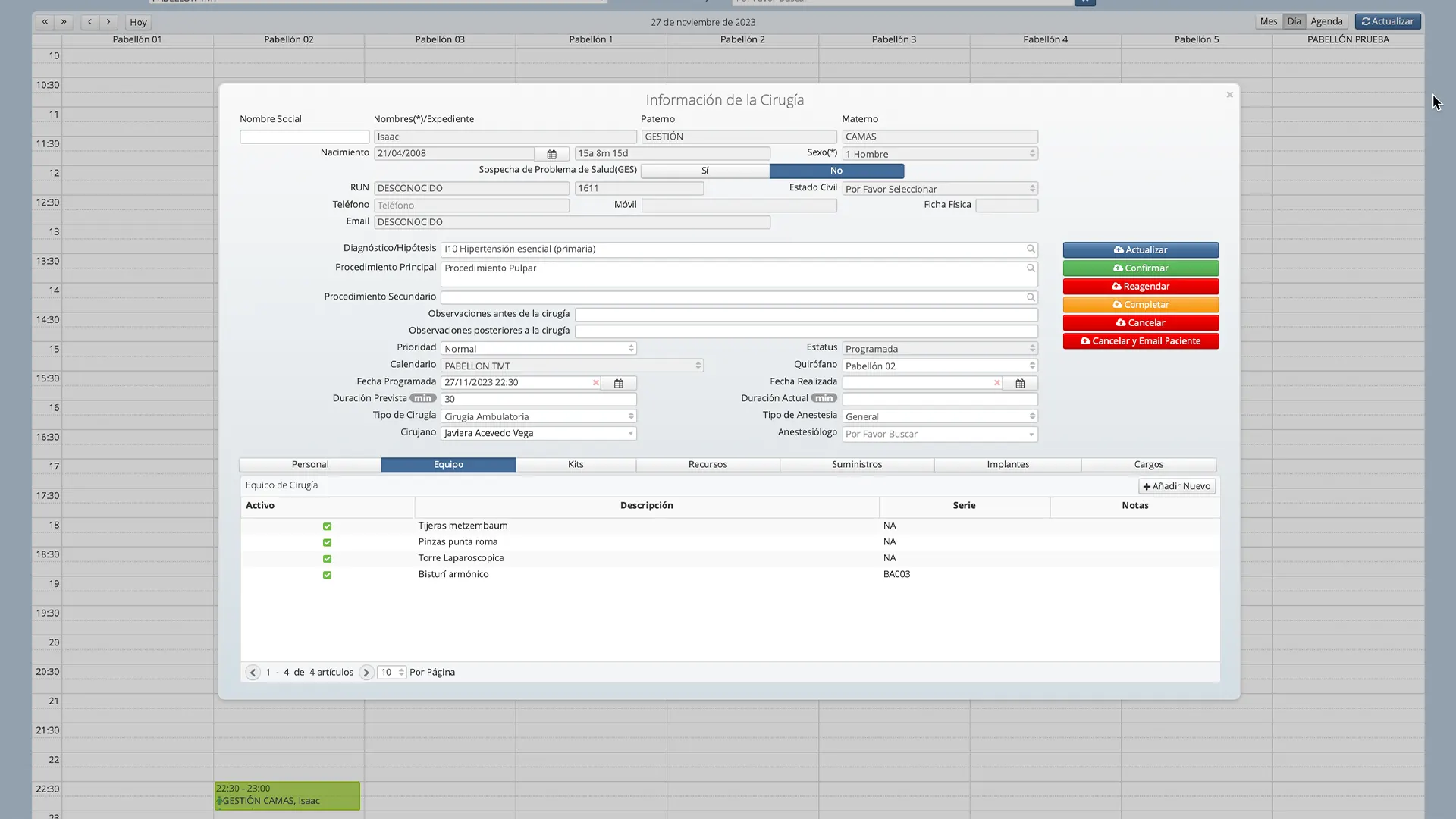

Benefits
Resource Optimization
Improving Continuity of Care
Reduction of Errors and Complications
Improved Patient Safety
Data-Based Decision Making
Functionalities
Auxiliary Services
Functionalities
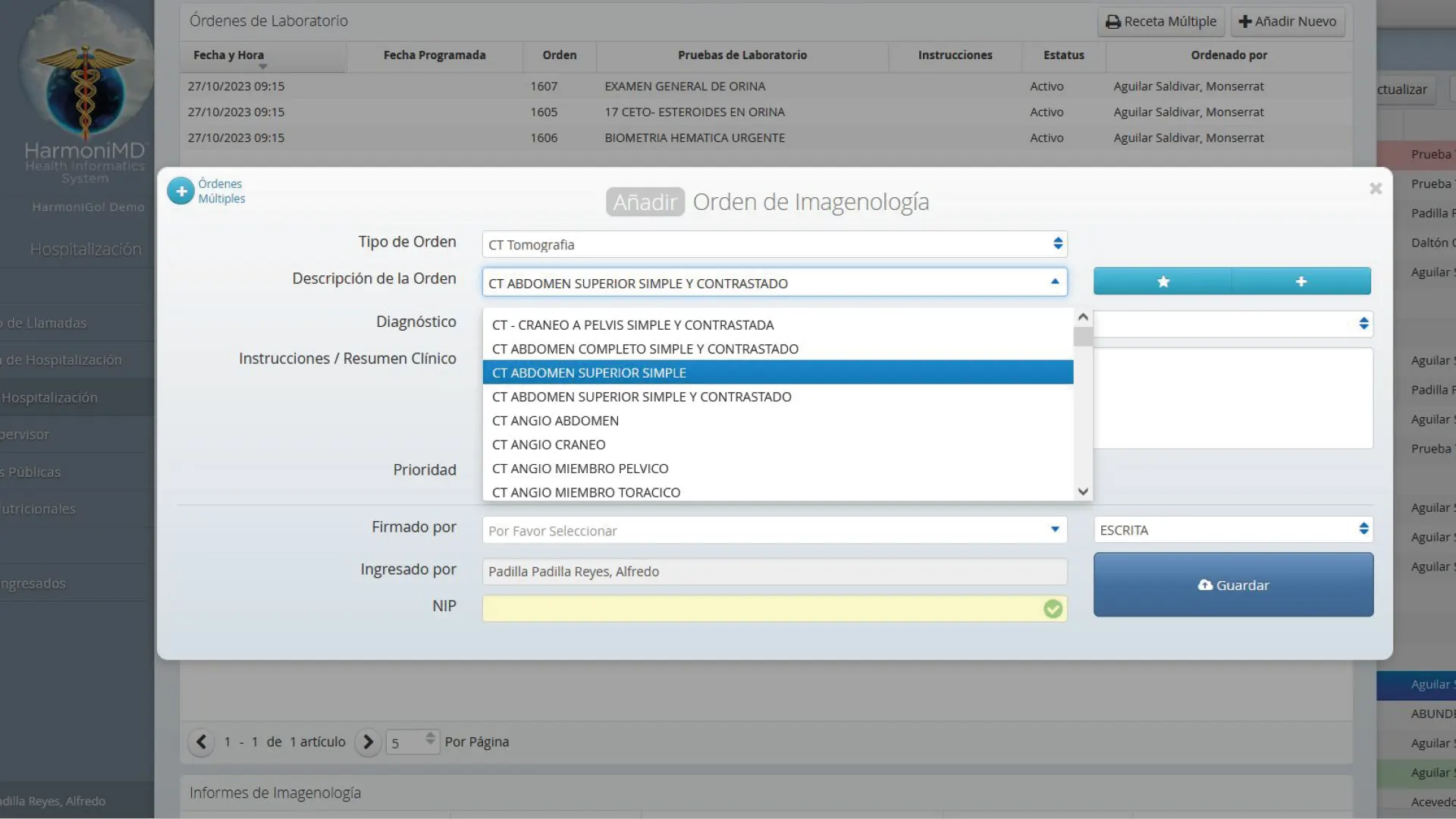
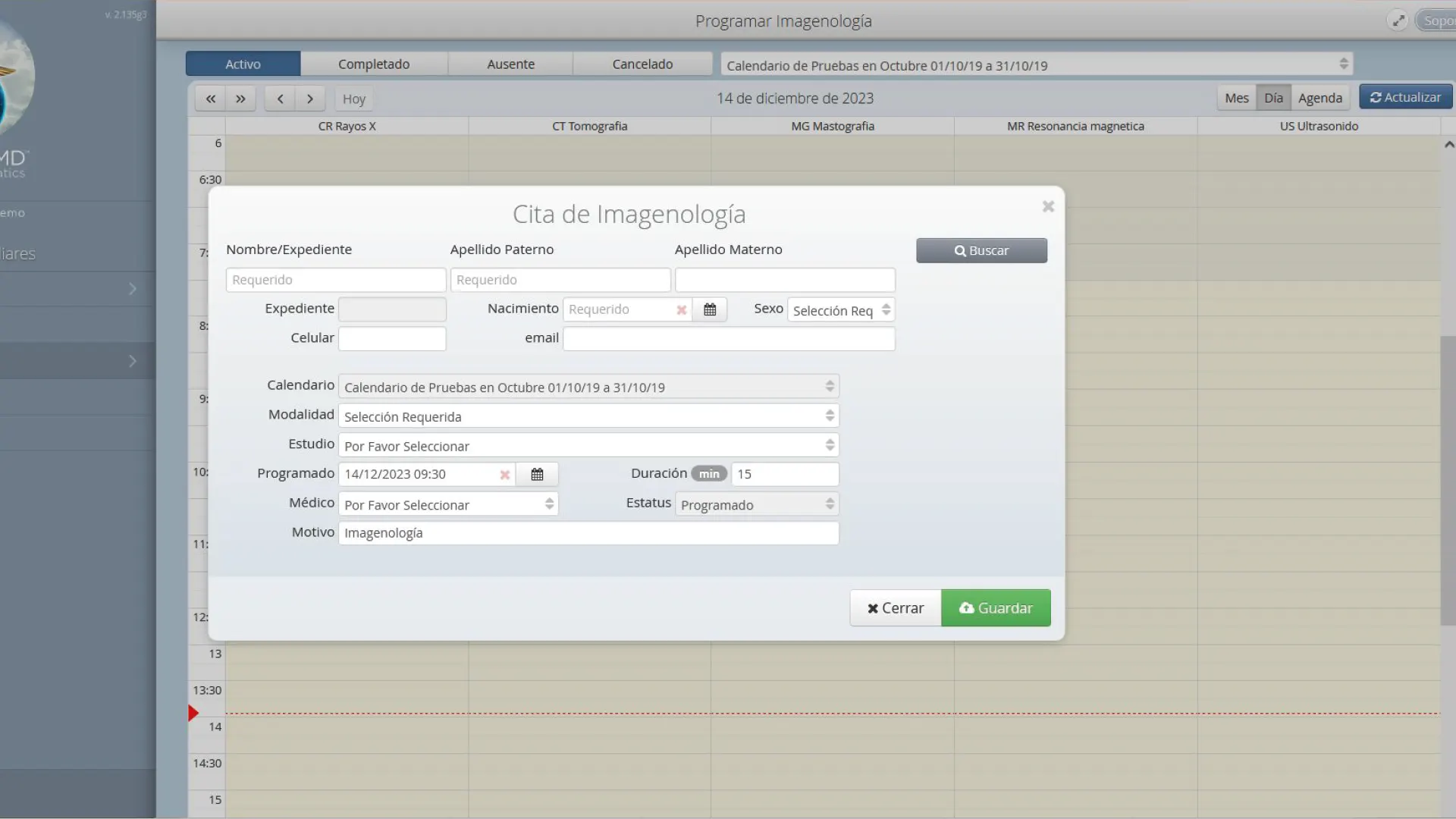
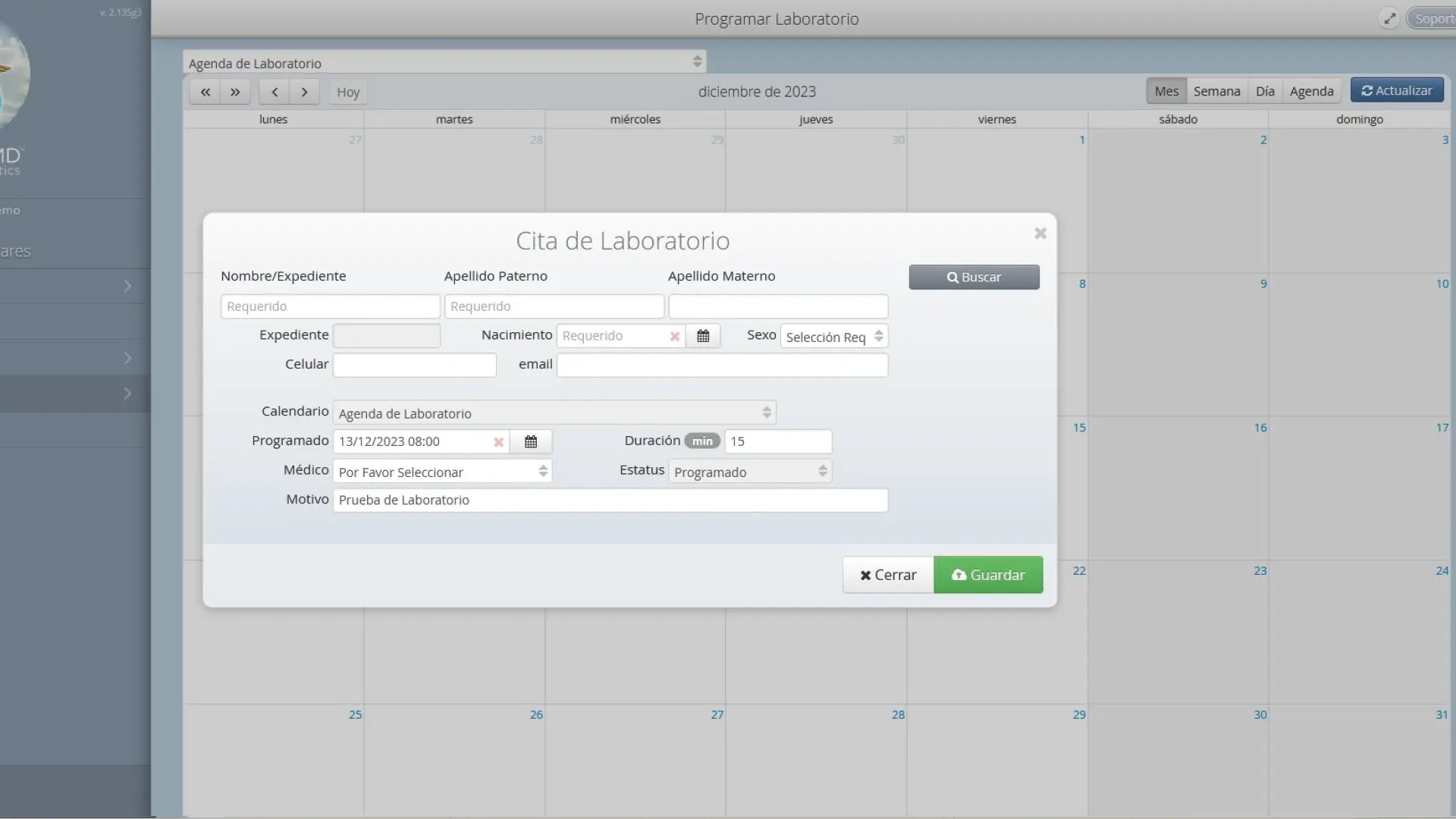
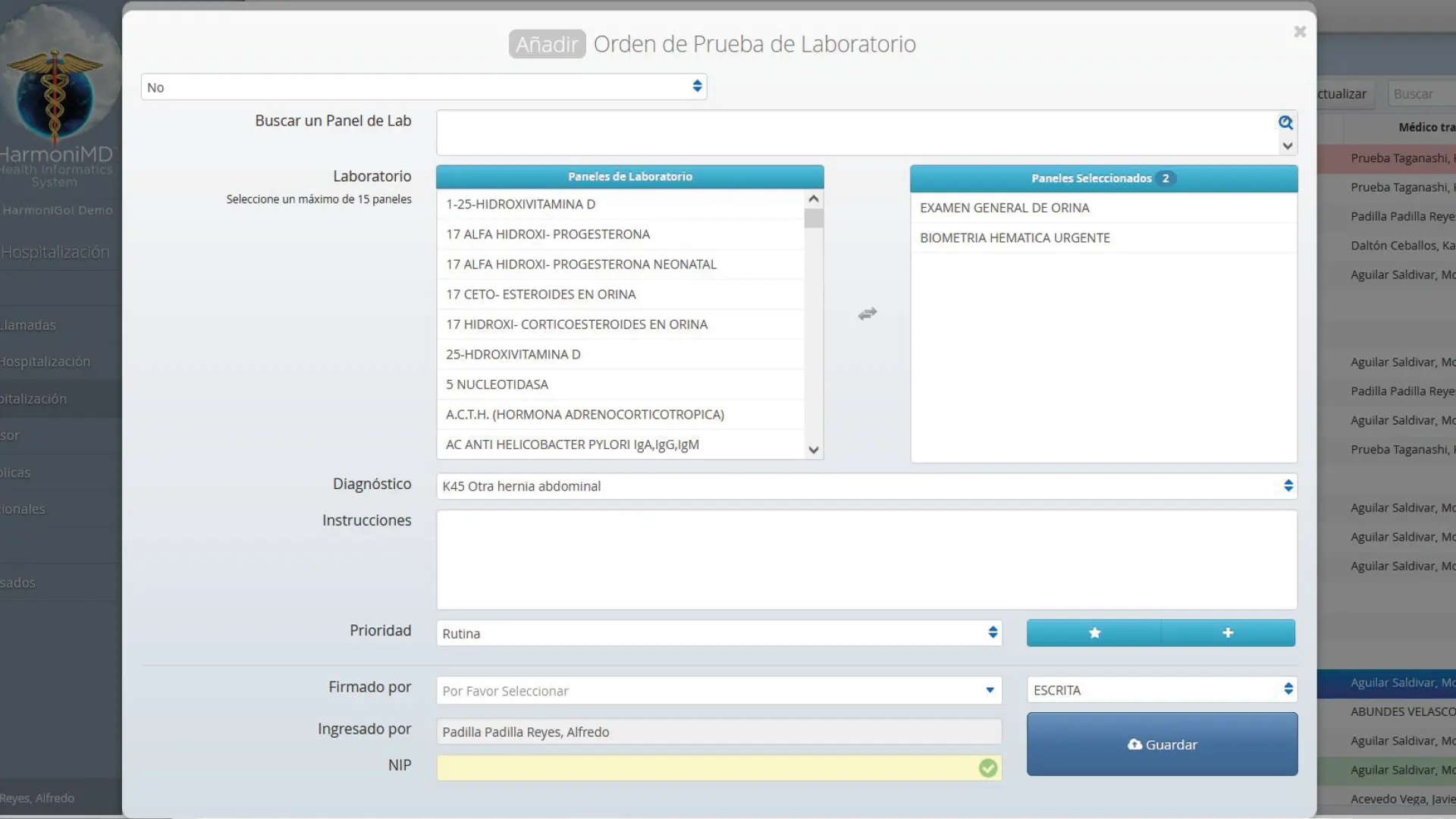
Benefits
Improvement in the efficiency of services
Information centralization
Resource Optimization
Improvement in the quality of patient care
Interoperability
Regulatory compliance
Patient Portal

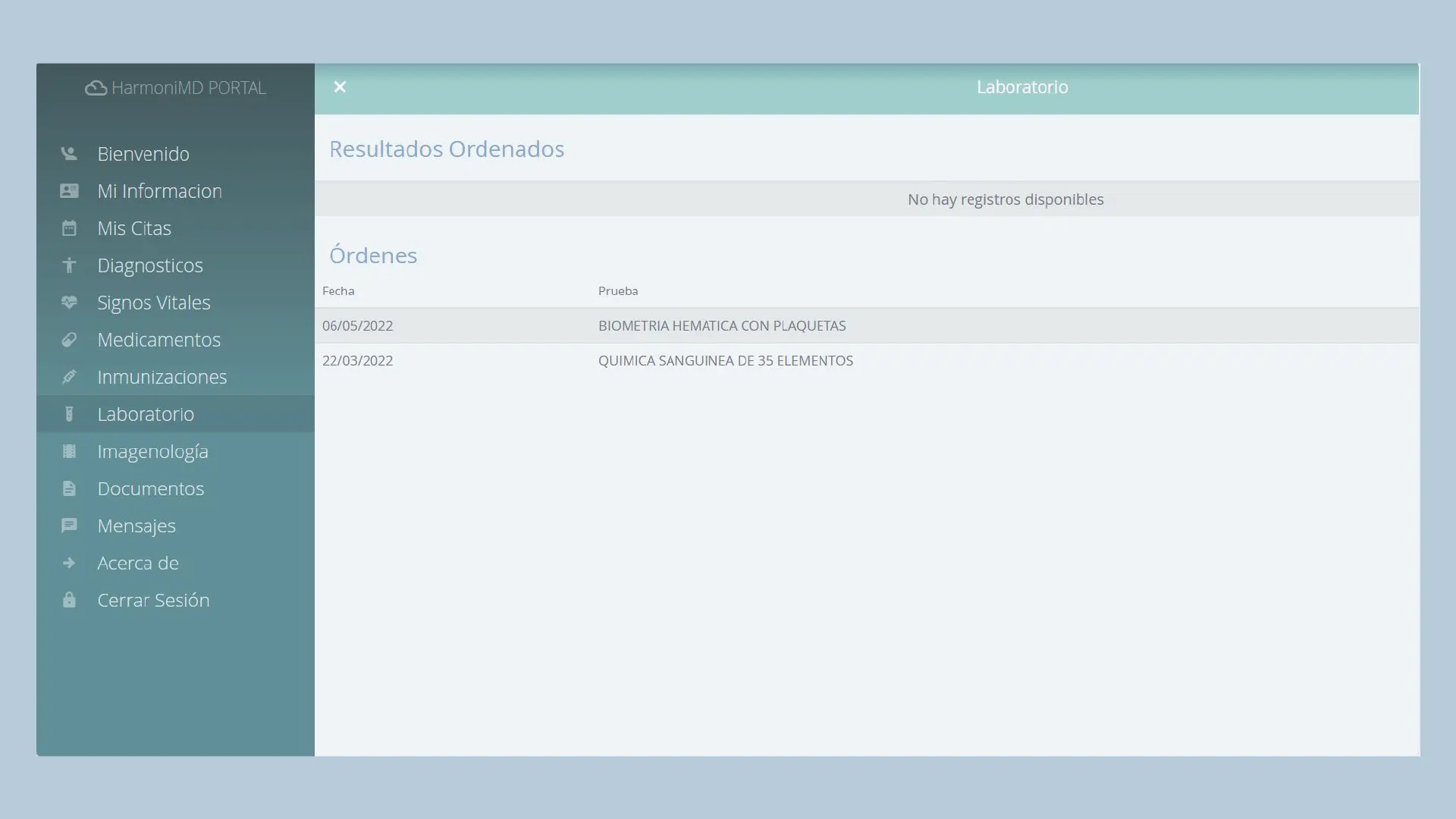


Benefits
Improvement in patient experience
Optimization of administrative processes
Improvement in doctor-patient communication
Patient empowerment
Reduction of no-shows and optimization of agendas
Functionalities
CRM (Customer Relationship Management)
Functionalities
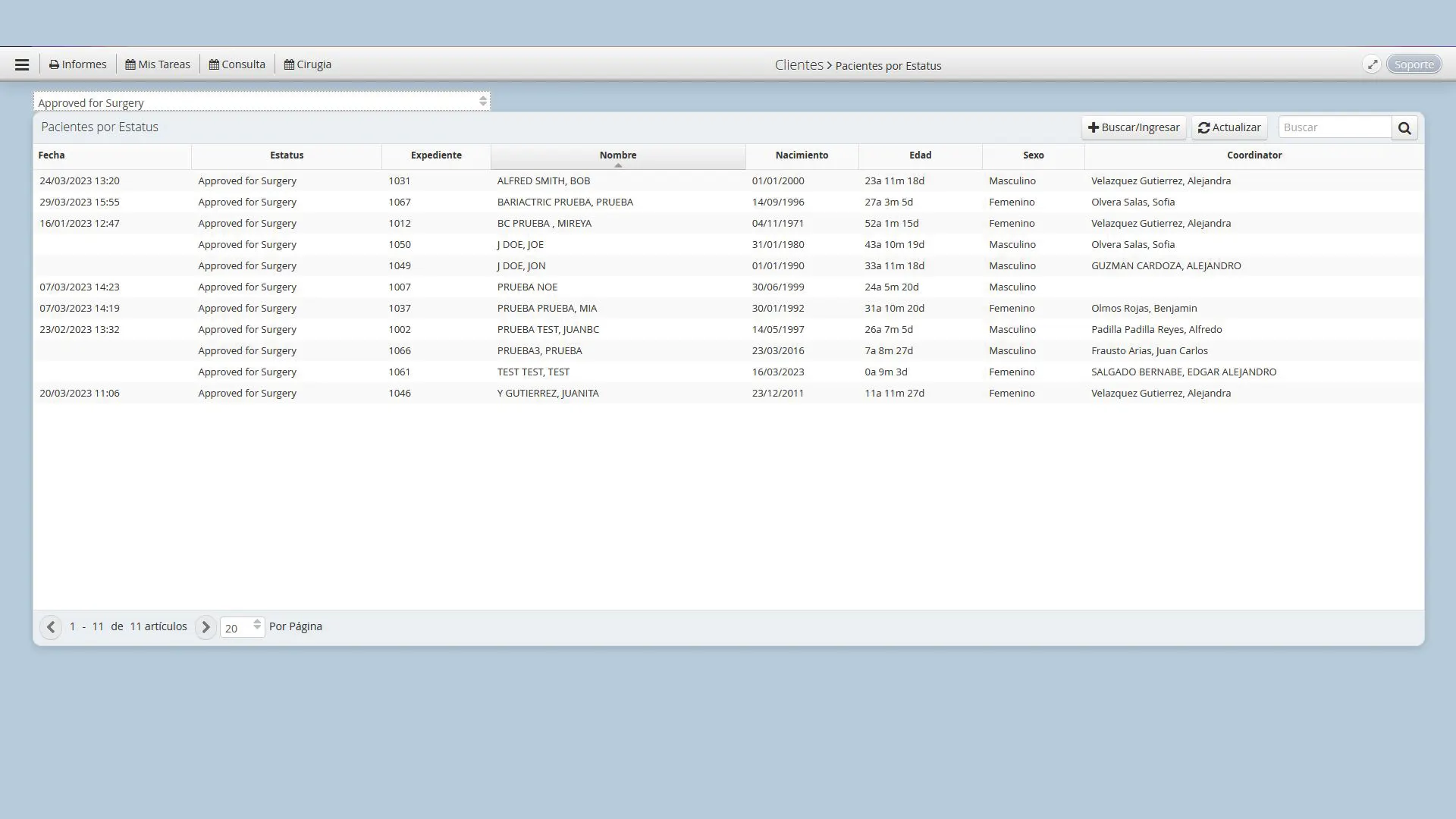
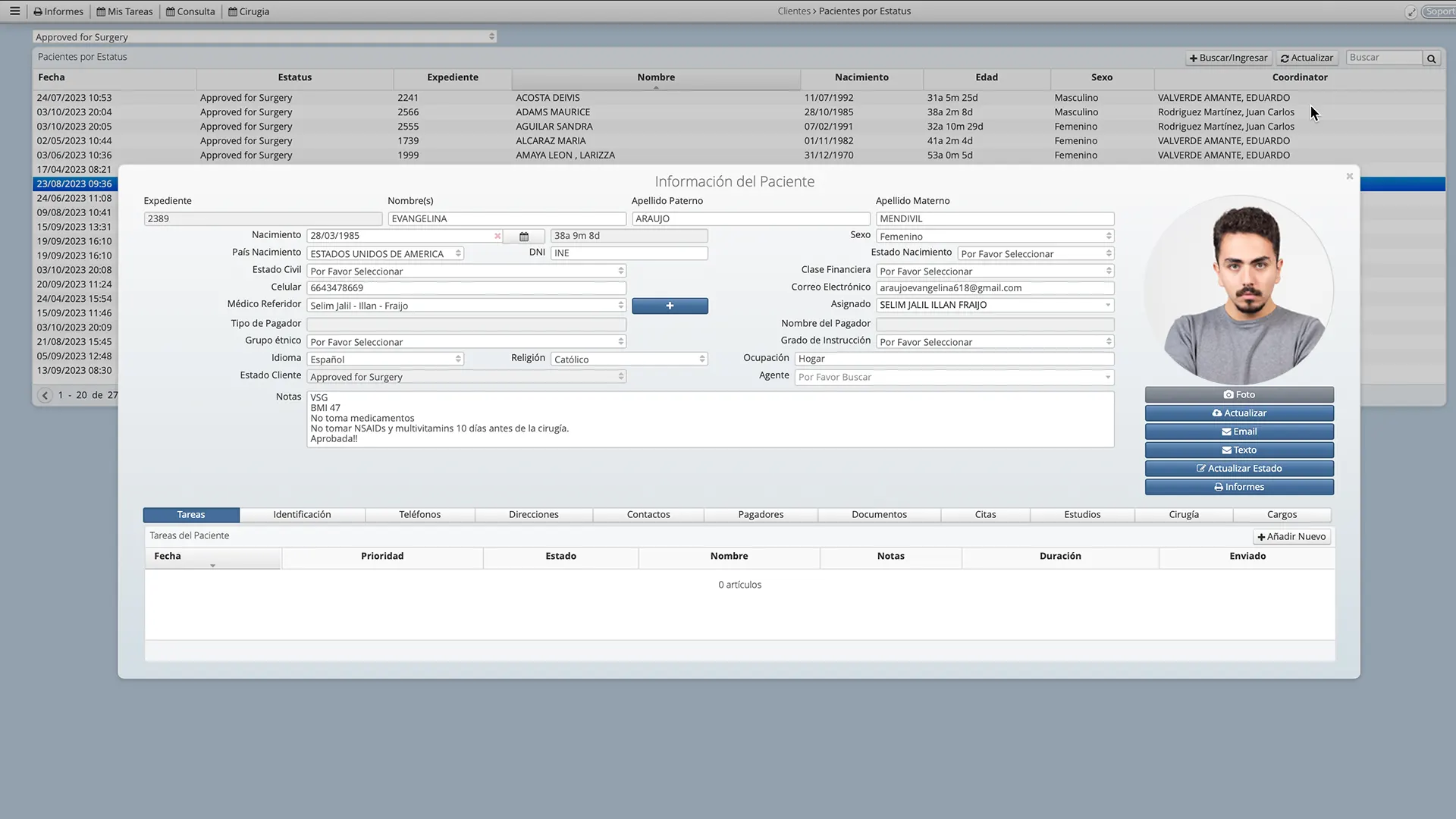
Benefits
Improved sales team efficiency
Increase in lead conversion rate
Better understanding of performance and trends
Personalization of customer service
Anticipation and preparation for the future
Consistency and quality in customer interaction
Quotes
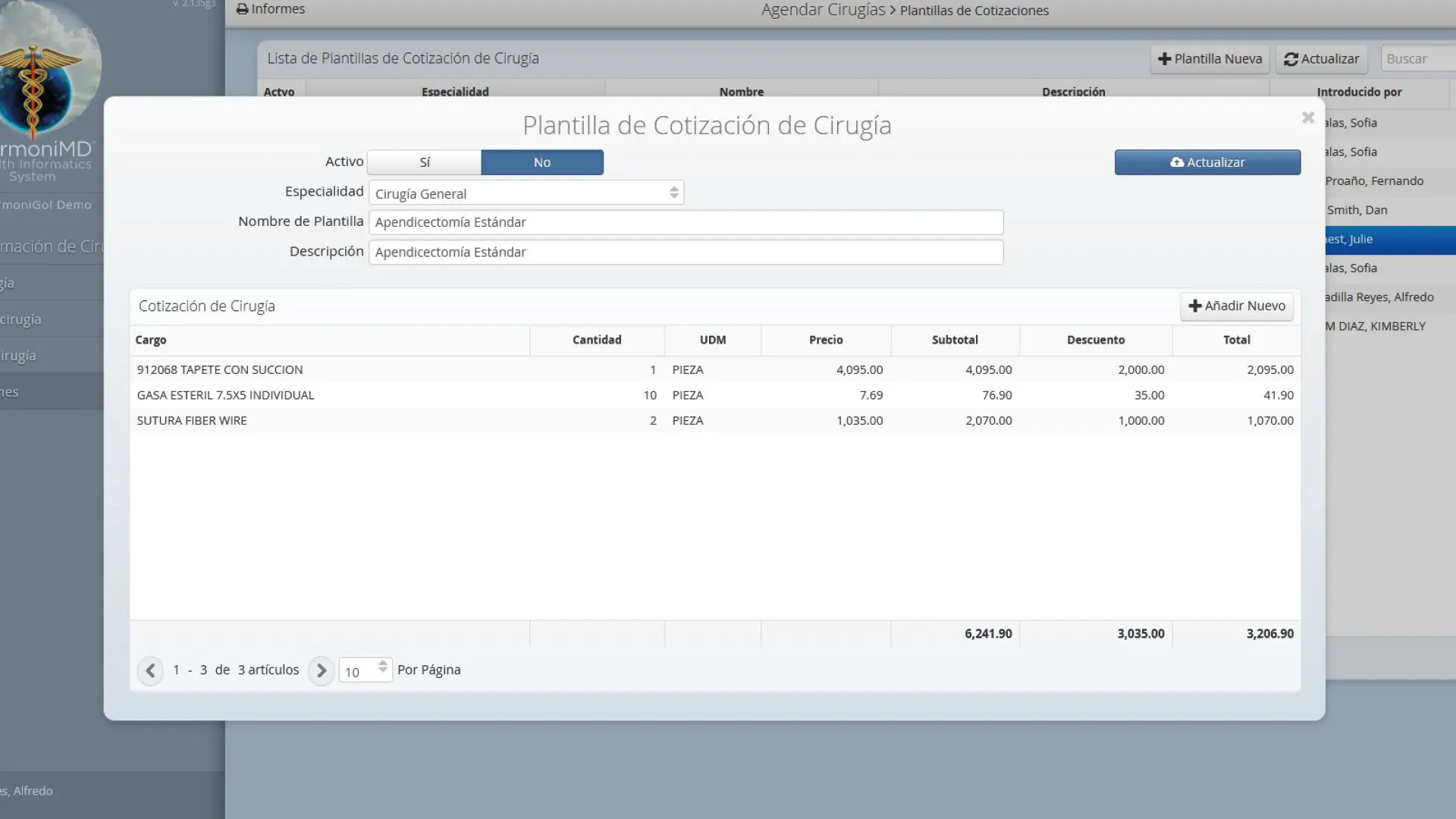
Benefits
Saving time and resources
Accuracy and consistency in quotes
Improvement in sales management
Valuable information for marketing
Greater customer satisfaction
Flexibility and responsiveness for the sales team
Functionalities
Transform your hospital management with HarmoniMD GO
